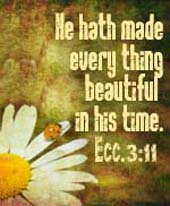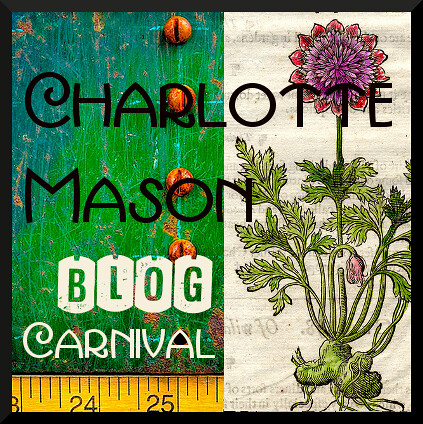We've had a lot of fun this time around with my youngest son learning to read. Even though his reading level is quickly advancing, so much so that he's halfway through Now We Are Six on his own, we are still carrying on with reading lessons. Some might call them phonics lessons, word-building, or spelling lessons - we bundle them all together and call them all Reading Lessons (because it's all so interwoven).
In this post, I'm going to outline some of the ideas that Charlotte talks about, and show how we've done them.
Prerequisites to Reading Lessons:
With our most recent batch of readers, the following pattern has surfaced.
- Play with letters/words - relaxed (child learns many letters by form & sound, some easy words by sight)
- Learn single letter phonograms (age5/6) (child learns all sounds each letter makes by itself, some easy words by sight)
- Practice blending building letters and words (child learns that sounds put together make familiar words, list of known words increases)
- Introduce multi-letter phonograms (child begins to memorize through games, the sounds of the phonograms that have more than one letter, ck, ch, oi, oy, ea, ee, etc)
- Start Reading Lessons...(whenever fully interested and ready, or around age 6/7)
Ideas for Reading Lessons:
For these lessons you will probably want to do a couple of things ahead of time:
- Print 2 copies of either of the following: Jesus Loves The Little Children or Jesus Loves Me.
- (choose the song most familiar... if unfamiliar spend a week learning the song before beginning)
- Cut out 3 sets of the words. (leave one set intact for later)
- Spread the words from the first page only (the first two lines of the song) out in a shoebox or cake pan.
- Store each poem it it's own ziploc bag.
The following lesson ideas could be broken into more than one session depending on the level of readiness of your child. He/she may be able to handle the whole lesson in one gulp, but you don't want the lesson to go much over 15 minutes.
Idea #1:
1) Using a dry erase board (or chalk board or markers on paper), write a word from the song (in random order), 2) say the word aloud as you write it, the child looks carefully and repeats, 3) from his cut outs, the child finds all the copies of the word.
Do the same with all the words:
Jesus children loves world little the all
4) from the board, child reads all the words as you point to them starting from the bottom of the list... words are still in random order. 5) child arranges his cut-up words in the same order as that on the white board. 6) child randomly rearranges the words in his own way reading them aloud. 7) Finally, dictate the song to the child and have them find the words as you go. 8) From the uncut copy, let the child read from the page. He/she will be delighted that she can now read all the words in the whole song! Review for the next day: 9) Have the child hunt for each word from the pile of cut up words. *optional: 10) if your child is ready for writing, have them write the word from memory. (*hint: try to keep the song a secret until the end...
that way the child gets all the satisfaction from the discovery himself!) Idea #2: (using a different song/poem) 1) Read/sing the first half of the song out loud, sweetly and with good intonation of voice. 2) Point to the words as you say them aloud. 3) When the child can see the words as it were without looking (in his mind's eye), and repeat the words without prompting even when taken in random order, let him read the lines with clear enunciation and expression. Review for the next day: 4) Have the child hunt for the words in turn from a page of clear type (perhaps the book from which the poem/song was taken?) 5) Using his letters, have the child build each word in turn from memory.
Idea #3: From a book, pointing to words you know your child has mastered, point to words and have them read them out loud.
Idea #4: Word building. Using the phonogram sheet (available here), have the child build words learned in previous lessons.
Idea #5: Make your own lesson! With these same ideas, use a poem or song already familiar to the child. Here are a few more printable lessons I made. The poems were chosen for the words themselves as well as interest level for kids this age...
By the end of these lessons the child will practically have the song/poem by heart, and the lesson can double as a recitation!
Helpful Links:
Download & print, First Reading Lessons in its entirety taken from CM's Volume One, here.
Parent's Review article, First Reading Lessons, by Miss E. Armitage
Parent's Review article, An Essay on the Teaching of Reading, by F.B. Lott
Parent's Review article, First Reading Lesson, by Charlotte Mason (the same as in volume one)
Some of my friend's who've blogged their CM reading lessons -
Phyllis at All Things Beautiful - here and here.
Richele at Barefoot Voyage - here.
Kathy at Piney Woods Homeschool - here.
More posts in this series:
Our Story... I'm a failure. {part one}
Our Story... Struggle no more. {part two}
Our Story... Just relax! {part three}
Learning to Read - The Scary Myth {part four}
The Two Keys to Teaching Reading {part five}
Playing a Foundation to Build on.
First Reading Lessons in Earnest. << -- You are here. :)
















11 comments:
We've been using these ideas too. We have done Caterpillar by Rosetti and one called Maytime Magic (I don't know who by). Also some verses. My son loves playing "Mix It Up" with the words. He puts them in a new order and then reads them back to me. Now, after several weeks of playing with random phrases, etc. He is becoming more intentional and on his way to writing some "found poems" Thanks for these links.
Chris
www.mobmom.wordpress.com
WOW!!! Thanks for posting all of these great ideas about reading. It has been so helpful to see your experiences! I've recommended these posts to all of my local homeschooling friends. Thanks again!
:) Jen
Very nice post. You have outlined the process quite well. It is nice to have it all in one place!
Thanks for the link.
A couple years ago I read The Surprising Power of Family Meals by Miriam Weinstein.
One of the surprising things to me was Miriam referenced research that found having daily family meals appeared to be more helpful that reading to children.
The analysis was that reading is a complex process. First children have to recognize letter, and then they have to learn the process of combining letters to form words. Then they have to recognize what the word means and put them together to form sentances. Children who spend a lot of time with other siblings and parents have a much richer vocabulary and don't struggle near as much when they hit a word they haven't read before. While they maybe haven't read it before, the chances are pretty good that they know what the word is, and what it means.
Henry,
What you're saying is definitely is definitely in line with the writings of Charlotte Mason, as you may already know.
I definitely agree with you from a 'scientific' point of view that the process of learning to read is quite complicated! However, I believe that in most cases the teaching of it doesn't have to be! The child doesn't even have to know that he's learning to read in order to actually BE learning... :)
Sometimes, if we were to 'force' the process I think we might do damage to the natural process of mental connections that are being made unconsciously by the child. The more natural way to develop or encourage the process is, as you've suggested, by familial interactions, including but not limited to parents retelling stories to their children. CM encourages playing outside, developing attention and observation, and the telling of stories to young children as opposed to reading aloud. :)
I think all these activities add that dimension that you've mentioned of developing vocabulary so that when the child actually comes to 'learning to read' officially he has a wide base of knowledge from which to draw.
:)
thank you for your insightful comment.
Hi Amy!
Great blog - love it! My oldest is my 4-year-old boy (almost 5) and he loves sounding out letters and making letters with his Jenga blocks or any other kind of blocks (I am slowly learning to accept this as his "writing" for now :) )! Thank you for the great ideas on pre-reading and reading! I tried accessing the Jesus Loves Me PDF and it won't pop up. The Jesus Loves the Littler Children one does work but I can't get the other one to show up. Just wanted to let you know about that link! Thanks!
Kim in Texas
alright. sorry about that, it's fixed now ;)
pics are fabu
likey the linkey
thanks!
Amy! This looks wonderful! How fortunate for so many that you have documented this beautiful process. I look forward to reading your series on Teaching Reading when I can sit with a hot cup of tea and enjoy.
Thanks for your comments on my "A First Reading Lesson" at LivingCMinCA. Good to hear the results of applying CM to reading, too.
Amy,
I'm excited to start using your reading lessons, I'm a little lost on the printables. Why 2 copies for the songs and why cut up three of them? Sometimes I over think things and miss the obvious any help would be appreciated. Is there anyway I can print out your ideas with this. I would like to keep it the folder with the words instead of looking up when I need them.
I love your blog, it is really helpful. Thanks for your help.
@Tiffany,
Many of the activities/games work better having several copies of each word. Word matchups, Find the word, etc. You do what works for you though!! ;)
amy
Post a Comment